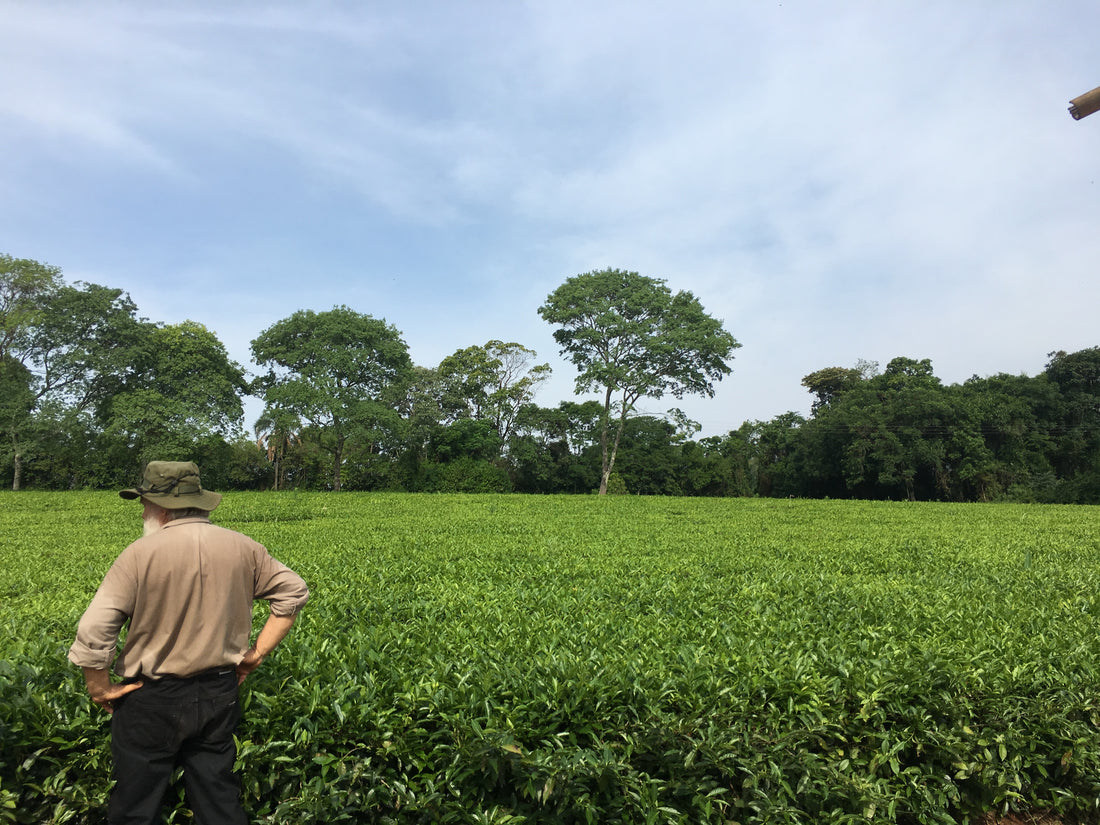This article was written in collaboration with Soy Te and Pei Chen Tea Palace
During the 1930s, 40s, and 50s, many immigrants came to the Argentine countryside. Among their belongings, they took tea seeds with them from different sources in Russia, India, Sri Lanka, China, and Japan. They came to settle all together: Misiones, in Northern Argentina.
During the 1950s, Argentine tea began industrializing with the arrival of industrial processing machinery. Before this point, small-scale tea farmers used to hand pluck and process their tea, which they then sold directly to London's Central Market, providing a living for the entire rest of the year. Due to more and more rampant industrialization, habit inculcated families with the idea that they only had to grow the tea. They then would allow large-scale factories or 'drying plants' to take over the processing, mainly to make CTC tea for tea bags.
Today, two generations later, none of them remember how to make craft tea, and mass selling coupled with over-production has dragged the price of fresh-cut tea leaves down to $0.01 (USD) per kilogram (two pounds). This payout causes the tea-growing families to have a net loss for the crop after having worked all year to grow the tea, and it has caused many of them to rip out or cut down their tea plantations to plant more lucrative crops such as tobacco, corn or cassava root. Since ripping out the tea trees is extremely expensive, many farms have gone under, having to then sell their farms to the only entities that can afford to purchase them: the five huge multi-millionaire industrial tea factories, who have been amassing more and more of the land, and who at the same time export the processed tea fannings and dust to Coca Cola, Lipton and Twinings for many millions of dollars each year. The tea farmer that goes bust sells their land for next to nothing and moves away to a big city where they set up a small mom and pop store or business until dying of old age since all the youth have abandoned their farms years prior in search of a more profitable profession. Thus, there was a net loss of 20% of tea production in Argentina between 2017 and 2020 due to the ever more often eradicated tea plantations.
The government's solution is to develop clonal tea cultivars, not based on improving the tea quality but geared toward faster growth. Those cents on the dollar the families make will be multiplied in some way. Few families are left that still have tea plantations planted from select seeds from the 30s, 40s, and 50s. The growth is slow, but they have high-quality flavor and aroma in the cup. Industrial tea companies value this far less than mass production. Nevertheless, the faster they replace their tea bushes with aggressive growth clones, the more they receive for the tea plummets.
The concentration of land and the riches produced on it by tea goes into the hands of a tight oligopoly of industrial factories, with many politicians (now millionaires) as accomplices. This trend has caused the 'green gold' of old to become a sentence to bankruptcy for more and more of the colonizing immigrants' descendants. They originally came from Poland, Russia, Germany, Finland, Sweden, Ukraine, Japan, and many other countries, searching for a better future. In the end, one could say that the cultivation of tea at the hand of local families, small-scale producers, is in danger of extinction. In the meantime, the families of the big factory owners travel the world, play golf alongside their ever-expanding tea fields, and use their race cars to run races at the local race track frivolously. Extremely impoverished shantytowns surround all due to the displacement of more and more manual workers due to the implementation of ever more giant and more efficient harvesting machines. The use of herbicides, pesticides, and chemical fertilizers is rampant. The land has been devastated, and the cells of the tea leaves that grow under the Misiones sun have nothing but bitterness and much liquid as if they were made up of the tears of the 'inefficient' local farmers who were strategically uprooted, as is the case of many tea plantations in current day.

Fortunately, there are always those who rebel to defy the norm: The Sand Family is an example of such rebellion. From the very beginning, they have refused to cut down their tea bushes, selling eggs, yerba mate, and honey to keep their farm from going under. In 2021, they are one of the few families that still have tea forests planted from seed in Northern Argentina. They want to learn from high-level experts how to improve their tea production processes to reach symbiosis between the land and the tea producers.
Ryan of Pei Chen Tea Palace, alongside his business partners in Argentina, have begun supporting the Sand Family and several other families in Northern Argentina to develop high-quality teas which will put Latin America on the map as a place of artisanal tea production, respecting the land, and obtaining a better life for tea producers.
In 2022, with the vision and coordination of Ryan and his team, we will collaborate with other Latin American countries under the knowledge of Shunan Teng and the Tea Drunk team, transmit the techniques used to make the finest teas in China, and start production in Argentina.

